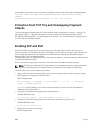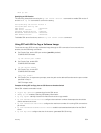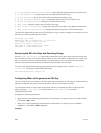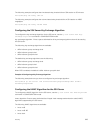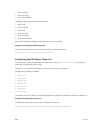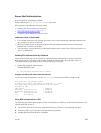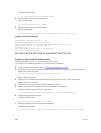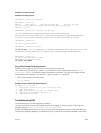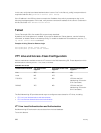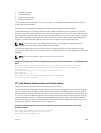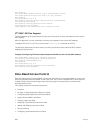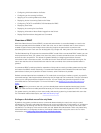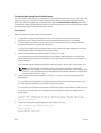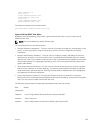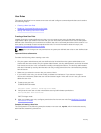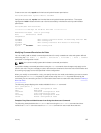
In this case, verify that host-based authentication is set to “Yes” in the file ssh_config (root permission is
required to edit this file): permission denied (host based).
If the IP address in the RSA key does not match the IP address from which you attempt to log in, the
following message appears. In this case, verify that the name and IP address of the client is contained in
the file /etc/hosts: RSA Authentication Error.
Telnet
To use Telnet with SSH, first enable SSH, as previously described.
By default, the Telnet daemon is enabled. If you want to disable the Telnet daemon, use the following
command, or disable Telnet in the startup config. To enable or disable the Telnet daemon, use the [no]
ip telnet server enable command.
Example of Using Telnet for Remote Login
Dell(conf)#ip telnet server enable
Dell(conf)#no ip telnet server enable
VTY Line and Access-Class Configuration
Various methods are available to restrict VTY access in the Dell Networking OS. These depend on which
authentication scheme you use — line, local, or remote.
Table 56. VTY Access
Authentication Method VTY access-class
support?
Username access-class
support?
Remote authorization
support?
Line YES NO NO
Local NO YES NO
TACACS+ YES NO YES (with the Dell
Networking OS version
5.2.1.0 and later)
RADIUS YES NO YES (with the Dell
Networking OS version
6.1.1.0 and later)
The Dell Networking OS provides several ways to configure access classes for VTY lines, including:
• VTY Line Local Authentication and Authorization
• VTY Line Remote Authentication and Authorization
VTY Line Local Authentication and Authorization
Dell Networking OS retrieves the access class from the local database.
To use this feature:
808
Security



